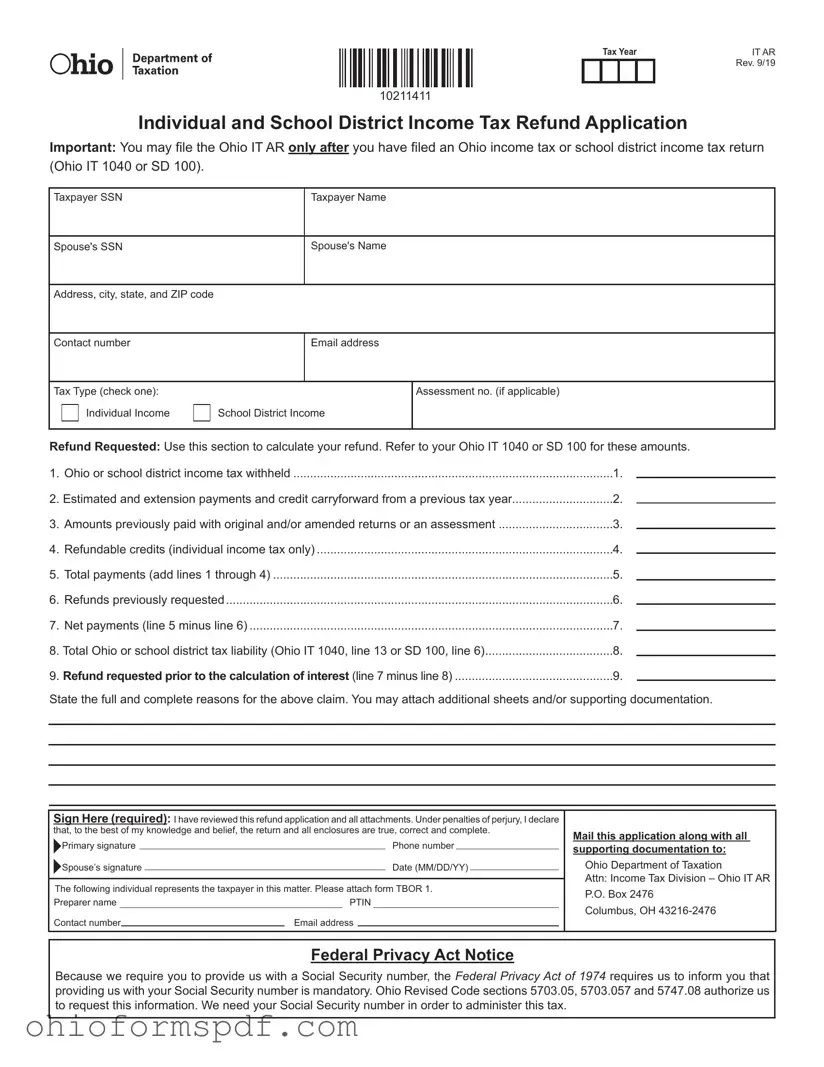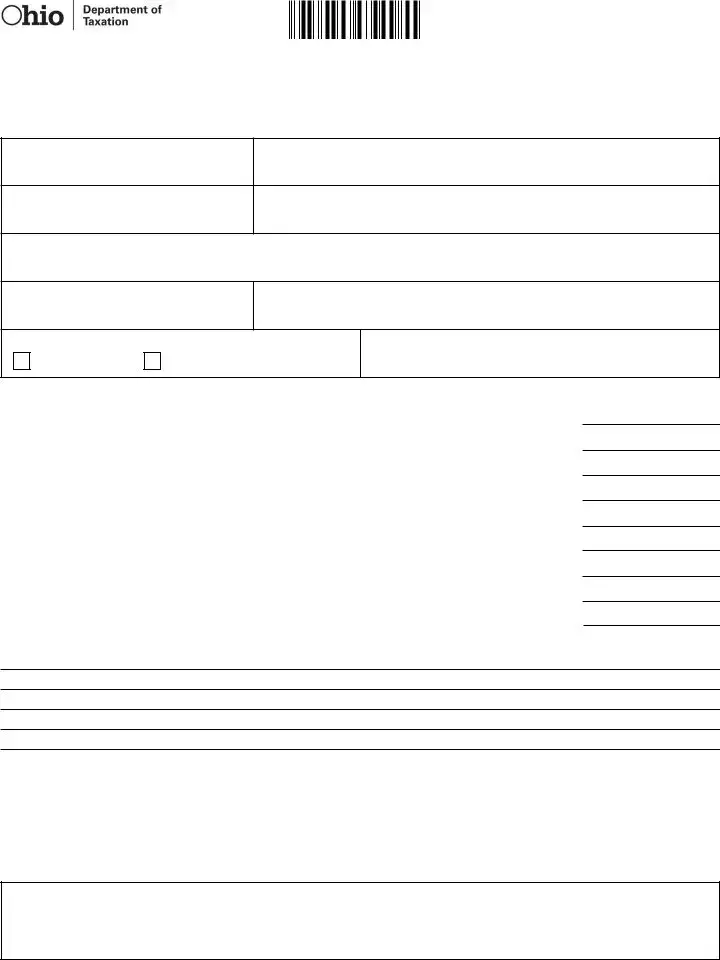The IRS Form 1040, U.S. Individual Income Tax Return, shares notable similarities with the Ohio IT AR form, specifically in its purpose for filing income tax returns and requesting refunds. Both forms require taxpayers to report income, deductions, and credits to determine their tax liability and any overpayment that may be due back as a refund. Taxpayer identification, such as Social Security numbers for individuals and their spouses, as well as contact information, are mandatory on both forms to ensure accurate processing and communication.
Form 1040-ES, Estimated Tax for Individuals, is akin to the Ohio IT AR in that it involves planning for and calculating tax liabilities ahead of disbursements. While the Ohio IT AR reconciles taxes already paid with the taxpayer's actual liability to request a refund, Form 1040-ES is used to estimate and pay taxes on income not subject to withholding taxes. The similarity lies in the forward-thinking approach to tax liability; one form addresses overpayment, while the other prevents underpayment.
The State of California Form 540, California Resident Income Tax Return, parallels the Ohio IT AR form through its state-specific income tax reporting and refund claiming processes. Both forms are designed to comply with their respective state tax laws and require detailed taxpayer information, income breakdowns, and the calculation of taxes owed versus payments made. This ensures taxpayers in both states can accurately request refunds for overpaid taxes.
The IRS Form 4868, Application for Automatic Extension of Time To File U.S. Individual Income Tax Return, shares the foundational purpose of adjusting tax filing deadlines, much like parts of the Ohio IT AR dealing with adjustments in tax payments or refund claims. Though the Form 4868 specifically grants additional time to file, not to amend or claim a refund, it similarly accommodates taxpayers' needs for flexibility regarding their tax obligations based on personal circumstances.
Form W-2, Wage and Tax Statement, is closely related to the Ohio IT AR form in the context of tax withholding and refund calculations. The W-2 form provides essential information about the income earned and taxes withheld by an employer, which taxpayers need to accurately fill out the Ohio IT AR form when claiming a refund. Both documents play pivotal roles in reconciling the actual tax liability with amounts previously paid through withholding or estimated payments.
The IRS Schedule C, Profit or Loss From Business, intersects with the Ohio IT AR form concerning the reporting of income and potential impact on tax refunds. Self-employed individuals use Schedule C to report their business earnings and expenses, affecting their overall tax liability. When filing the Ohio IT AR, taxpayers who also submit Schedule C must account for this self-employment income in their refund calculation, demonstrating how different sources of income influence refund claims.
Form 1099-MISC, Miscellaneous Income, and the Ohio IT AR form are related through the tax implications of non-employment income. Taxpayers receiving income documented on a Form 1099-MISC, such as freelance income, rents, or royalties, would need to report this in their income calculations on the Ohio IT AR form if applicable. This shared focus on accurately reporting all types of taxable income ensures individuals' tax liabilities and refund requests are correctly calculated.
The IRS Form 8863, Education Credits (American Opportunity and Lifetime Learning Credits), and the Ohio IT AR form connect through their handling of tax credits. Form 8863 allows taxpayers to claim deductions based on education expenses, directly affecting the tax liability calculated on forms like the Ohio IT AR. By including these credits, taxpayers can accurately assess their refund eligibility, illustrating the broader financial planning aspects of tax filing and refund applications.

